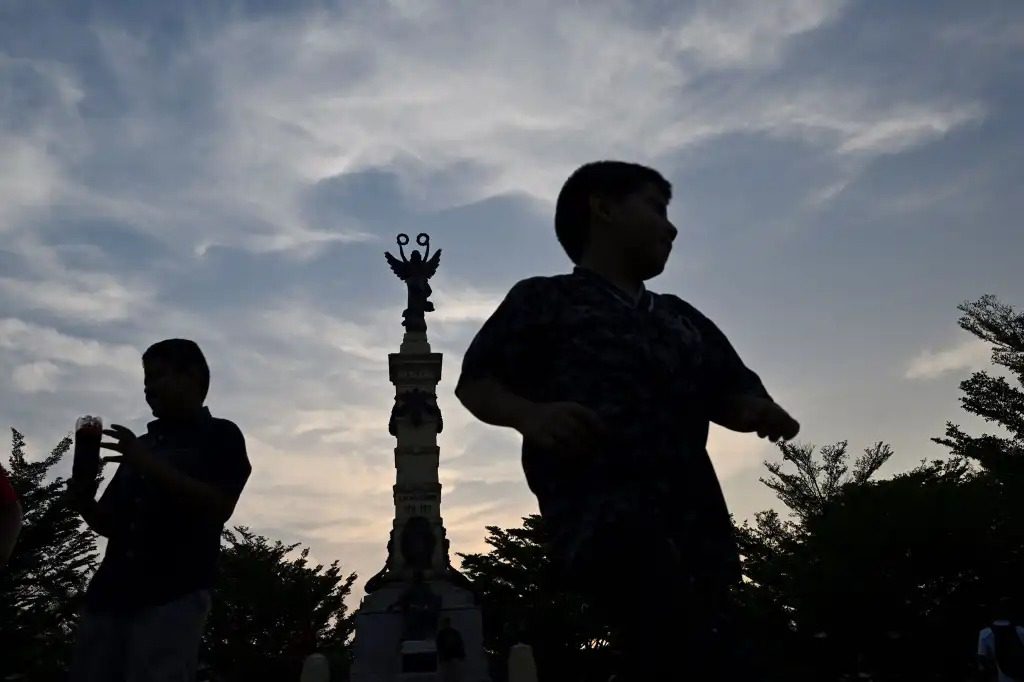Global Courant 2023-05-20 05:21:02
Cumbias and boleros are heard in the Plaza Libertad in San Salvador, a sight that was previously unthinkable due to fear of the gangs that have plagued the Central American country.
There, where in the late afternoon the neighbors gather to the sound of cumbias and boleros, they dance in a new environment as documented by the AFP news agency.
What is observed in this public space is a sample of the effect of the “war” against the gangs, launched 14 months ago by President Nayib Bukele.
“There is a very beautiful atmosphere here, I make the lame dance,” Sonia Isabel Aguilar, 75, popularly known as Yajaira, told AFP with a smile.
As he commented, he has “music in his veins”, while admitting that he dances to “forget his sorrows”.
She herself suffered from the scourges at the hands of criminal structures when 11 years ago, gang violence took her 31-year-old son Carlos Antonio Cornejo from her.
Sonia Isabel Aguilar, 75, a dancer known as Yajaira, has fun doing one of her dance routines in front of some spectators in Plaza Libertad. (Free Press Photo: AFP)
Yajaira then set out to help raise her granddaughter, now fifteen.
Also read: Who is “the third general leader of the Mara Salvatrucha” in El Salvador captured in Guatemala along with other gang members
Sonia suffered the loss of her son as a result of the violence generated by the gangs. Her granddaughter, now 15, has been in her care ever since. (Free Press Photo: AFP)
The residents of the town assured that before the emergency regime, with which more than 69,000 alleged gang members have been captured, visiting or staying in that square was risky.
According to historical data, the gangs were taking territorial control in the country after the end of its civil war between 1980 and 1992.
The “war” against gangs, started 14 months ago by President Nayib Bukele, has created a safe environment in the country, encouraging people to occupy public spaces. (Free Press Photo: AFP)
The government attributes some 120,000 deaths to these groups, more than the 75,000 left by the armed conflict.
The agency documented that nine out of 10 Salvadorans support the crusade against gangs, according to surveys. However, although Bukele’s plan has been criticized by the Catholic Church and human rights organizations, which ensure that there are many innocent people among those detained.
People have fun dancing and playing music in the Plaza Libertad. (Free Press Photo: AFP)
“The Red Dot”
The Plaza Libertad was a disputed territory between the Mara Salvatrucha and a faction of Barrio 18, since both sides were dedicated to extorting merchants in the sector.
But now, it is a meeting point for a hundred people who take advantage of dancing until dark.
An old man sings and plays drums to set the scene for the afternoon of the May 12, 2023 paso in central El Salvador. (Free Press Photo: AFP)
In addition, Salvadorans and tourists are observed in the cafeterias and bars that have opened in downtown San Salvador.
“The historic center is experiencing a renaissance and is one of the safest places in the country,” Mario Durán, the mayor of the capital, recently stated. Before, “it was the most dangerous, it was the red dot of the red,” he said in an interview with a local television outlet.
Also read: What consequences does the arrival of gang members fleeing from El Salvador due to Bukele’s war against the gangs have in Latin America
María Teresa Belloso, 66, supports what the mayor says. Now “there is more security, and one can come and sit in the parks, because before one came with fear,” she told AFP as she waited for someone to dance.
Social media content creators film people having fun while dancing and playing music in Plaza Libertad. (Free Press Photo: AFP)
To one side of the San Salvador Cathedral, you can also see a Mexican couple who make a living as human statues, dressed in golden charro suits.
“It’s good that El Salvador is doing something for culture”, comments one of them when celebrating that in the capital they are “liberating spaces”.
Almost at the same time as the crusade against the gangs, the capital’s commune carried out a reorganization plan to remove some 3,500 vendors who had street stalls in the central zone.
General view of Plaza Libertad, where people gather at night to dance and play music in the historic center of San Salvador. (Free Press Photo: AFP)
Increased security and the elimination of stalls have allowed people to walk freely on the sidewalks and rediscover old commercial buildings, cinemas and even the Gothic-style El Calvario church.








